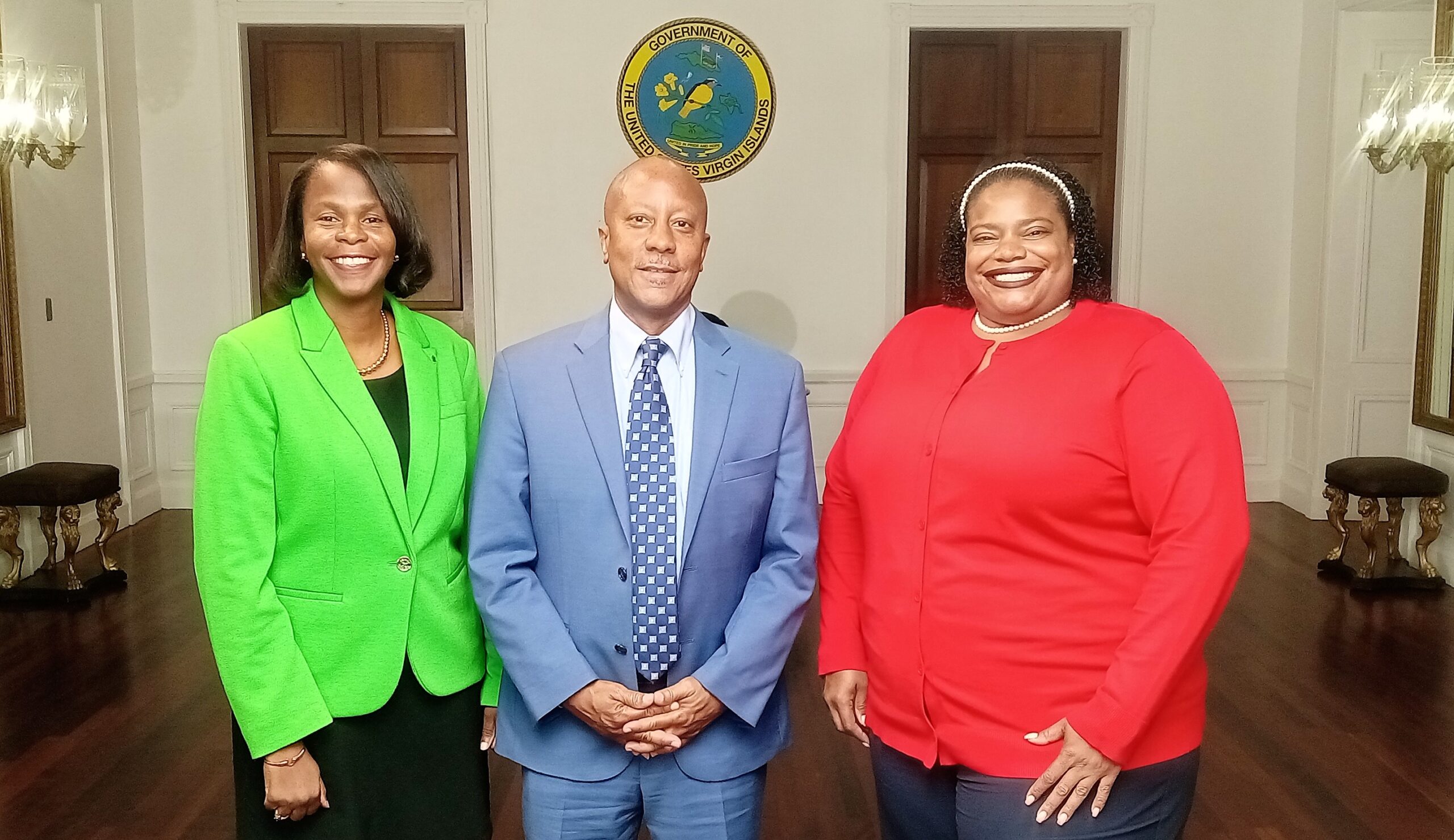
The progress made after the impacts of twin Category 5 hurricanes Irma and Maria in September 2017 was the topic of discussion during Tuesday night’s episode of the Press Box. The episode marked the 5-year anniversary of Irma and, just two weeks later, the impact of Maria.
Host Laurissa Ellis said, “In 2022, the U.S. Virgin Islands will continue to build.”
Adrian Williams-Octalien, the director of the Office of Disaster Recovery, who joined in on the discussion, said, “There is no generation that is alive that does not understand the devastation that hurricanes bring and just the stress of the aftermath of rebuilding.”
In 2019 the Office of Disaster Recovery was established in order to manage the funds, and Williams-Octalien was assigned as the director by the Bryan/Roach administration. The discussion was divided into three blocks that covered the Water and Power Authority, Virgin Islands Housing, and the hospitals in the territory.
Andrew Smith, chief executive officer at the V.I. Water and Power Authority, said that the system experienced very significant damage during the storm. “There’s a generation asset that makes the electricity, and then there’s the transmission and distribution asset that gets the electricity to people’s homes.”
Smith said that after hurricanes Irma and Maria, approximately 95 percent of the transmission and distribution systems had to be completely repaired to get power restored to customers. Within the transmission and distribution system, not only were there wire and pole damages but also substations and transformers that also had sea water and other water intrusion.
Smith said that the damage to the water system came during restoration due to the aggressive push to restore power, which included setting poles and doing other physical work, and in the process, the water system was severely damaged.
Smith said the generating units are all old, “typically 30-plus in age,” with some units located on St. Thomas and on St. Croix. The substations where the transformers and a lot of equipment sets were in existence since Hurricane Hugo in 1989.
Smith said some power poles are 25 to 30 years old to a couple of days old. “The water infrastructure is fairly old,” said Smith, adding that it is a big initiative that the Water and Power Authority is looking into replacing.
“FEMA will replace all the potable water lines on St. Croix, and the St. Croix project will be used as a model for St. Thomas,” said Williams-Octalien. “In addition, CDBG funds allow us to expand the water line systems in areas where we don’t have drinking water or potable water lines. We are able to provide those services to customers.”
Smith also provided an update on composite poles replacing old wooden poles that can sustain 200-mile-an-hour winds, and so far St. John is 83 percent done, St. Thomas is 72 percent done, and St. Croix is 69 percent done.
During the weekend, the territory experienced severe weather, and Smith said the composite poles did not have any issues. Underground infrastructures are 73 to 85 percent complete depending on the project. Smith said for more updates, customers can visit the Water and Power Authority’s website.
On the housing side of things, Chief Operating Officer Lydia Pelle said after the storm, communities sustained quite a bit of damage. “We focused on the roofs of the exteriors of the buildings, and we are getting ready to start working on the interior of the buildings.”
Pelle reflected on the severe damages that occurred primarily on the west of St. Croix, at St. John’s Adrian Senior Center, the Michael Terrace Community and Paul M. Pearson Gardens on St. Thomas, just to name a few. Pelle said the federal funding after the storms created a “once-in-a-lifetime opportunity … to be able to truly repair and rebuild housing communities throughout the territory. With that, we put together a repositioning plan,” said Pelle.
The $1 billion plan for more than 3,000 public housing units was a vision for Executive Director Robert Graham and the Board of Commissioners to start rebuilding public housing, said Pelle.
Lastly, Darryl Smalls, executive director of the territorial hospital redevelopment team, said the team was formulated to bring all of the hospitals in line for the new construction efforts. The impetus is to standardize all the construction activities and all the major systems and equipment that will be within each of the hospitals.
Small said that both the Juan F. Luis Hospital and the Roy Lester Schneider Hospital were constructed in 1982 and currently have various systems. This makes it difficult for the staff to go from one facility or help in another facility. Therefore there is a need to standardize both facilities, he said.
Juan F. Luis Hospital, Roy Lester Schneider Hospital, and the Charlotte Kimelman Cancer Institute were all approved by FEMA for replacement and therefore new state-of-the-art facilities will be constructed.





